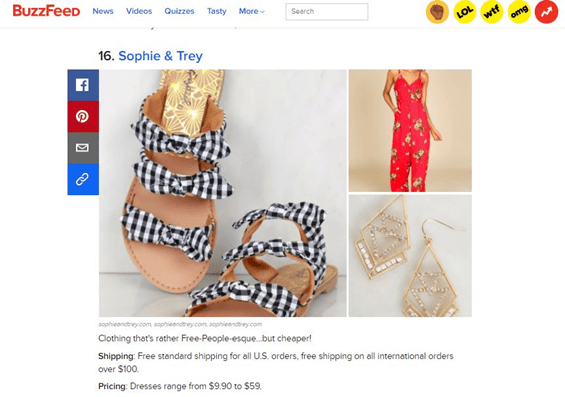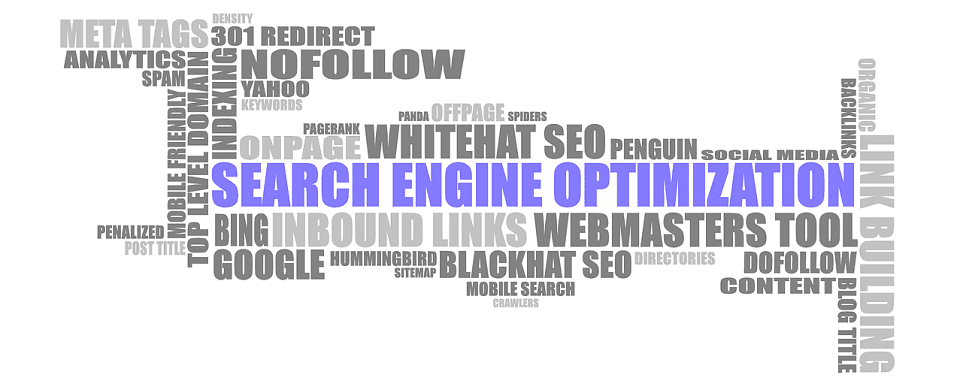When it comes to your e-commerce website, link building is the most challenging part out of the entire SEO process. Experienced SEO specialists are quite aware that they will need strong links to get a site highly ranked.
But the question remains, how does one build links that will positively affect their website’s rankings?
There is no specific answer to this question. Link building is entirely different from on-page SEO, where a list of requirements needs to be met to get a site optimized.
For this reason, you need to think outside the box and be creative with your link building efforts.
If you are unsure how to improve a site’s ranking via link building, then here are four things to consider.
1. Create and Maintain an Active Blog
You can always start by creating and maintaining a blog of your own for your e-commerce website.
When done correctly, a good blog will help your website earn incoming links from trusted websites.
For this to work, your blog needs to be a part of your site’s domain and/or subdomain, i.e., blog.yoursite.com or yoursite.com/blog.
If your blog exists on another domain entirely, it will be of no use to you.

Image Courtesy: Beyond the Box – Zappos.com
To get links from blogging, you will need to invest in great content, the kind that offers real value to readers.
Eventually, other webmasters will link to your blog, even though they know it is related to an e-commerce website.
Links to your blog will help boost your domain authority, playing an integral role in improving rankings for your product pages and domain as a whole.
Even though you may own an active blog, it is not enough to attract links without further effort.
You also need to promote your blog posts, but only in relevant places.
At the same time, enough emphasis cannot be placed on the fact that all your blog posts must be SEO optimized, without which you can forget about improving your site’s rankings.
2. An Affiliate Program Can Pay Dividends
First and foremost, you need to understand that this route can and will be tricky.
This is why you should spend time learning how to set up an affiliate program in the first place.
Google, at least for now, recommends that affiliate links on any and all ads are set to ‘no-follow.’
Matt Cutts, former head of Google’s Search Quality Team, stated as much in an interview in 2012.
Google is fully capable of handling affiliate links, but for those that are concerned, they should set such links to no-follow.
With that out of the way, you need to understand that using a platform like sharesale or similar dedicated platforms for affiliates, your links will be set to nofollow.
Basically, you are not going to gain anything from here in regards to link building benefits.
However, if you were to set up your own affiliate system, then all links placed on other sites can still earn you clicks.
To benefit from links while protecting your affiliates, here are a couple of rules for you to keep in mind:
- For ads that you make and hand over to affiliates to advertise your products or services, ensure the no-follow tag is added to the links. This is done to prevent many do-follow links from a single site.
- For text links used in content-rich pages by affiliates, e., blog posts, you can leave links as they are without having to make them no-follow.
- As a vendor, you are never truly in control of how links are added to other sites.
3. Use your Blog to Link other Sites
When creating content for your blog, do not shy away from adding links to other blogs or sites.
Of course, this does not mean you include direct competitors.
Feel free to link at will to websites in similar niches to your own without concern.
Why do this? Webmasters will most likely notice your link using tools like Google Search Console.
If your website is useful, they will return the favor.
Despite the fact this may appear to be an exchange of sorts, that is not the case.
It is actually considered good practice by none other than Google itself.
4. Get Featured on Media Websites
If you manage to get featured on popular media websites like BuzzFeed, STYLECASTER, Forbes, Entrepreneur, and others, you will get much more than a link back.
With this approach, you will benefit from one of the most effective ways of promoting your business, as is evident with Sophie & Trey and its success.

Image Courtesy: 27 Totally Underrated Places to Shop for Clothes Online – BuzzFeed

Image Courtesy: Treat Yourself to These Pretty Finds for Valentine’s Day – STYLE CASTER
You can make this happen by:
Connecting with Journalists
If you want to be known, let journalists know you actually exist in the first place.
If they don’t know about you, they won’t link.
Wondering how to contact them? Start by emailing them directly.
You can even connect with them across all available social media platforms.
In fact, you can also run targeted ad campaigns on Facebook.
The possibilities are quite frankly, limitless.
It may be a time-consuming process, but the results are worth the effort.
Reaching out to Editors
If you have an idea for a guest post, reach out to editors.
It is a completely different approach from the method mentioned earlier, where you are more specifically connecting with journalists.
Remember that link building is not as easy as it may seem.
It requires a considerable amount of time and knowledge on how SEO works.
When first starting out, it’s typical that you will end up getting links from wherever you can find them.
Careful here though…you could end up doing more harm than good in the long run.
When it comes to link building for an e-commerce website, the task can be overwhelming, not to mention painful in comparison to a blog.
Since people are unwilling to link product pages, you will need to resort to other methods to get every precious link possible. Start with the four tips mentioned above.
Feature Image Credit: CC 0; Public Domain. View original feature image on Pixabay.
Disclaimer: The views and opinions stated in this post are that of the author, and Return On Now may or may not agree with any or all of the commentary.
Sohail Rupani
Latest posts by Sohail Rupani (see all)
- Link Building for Your E-Commerce Website: 4 Things To Consider - March 13, 2018





